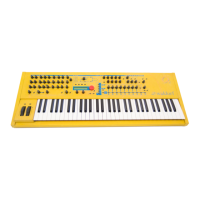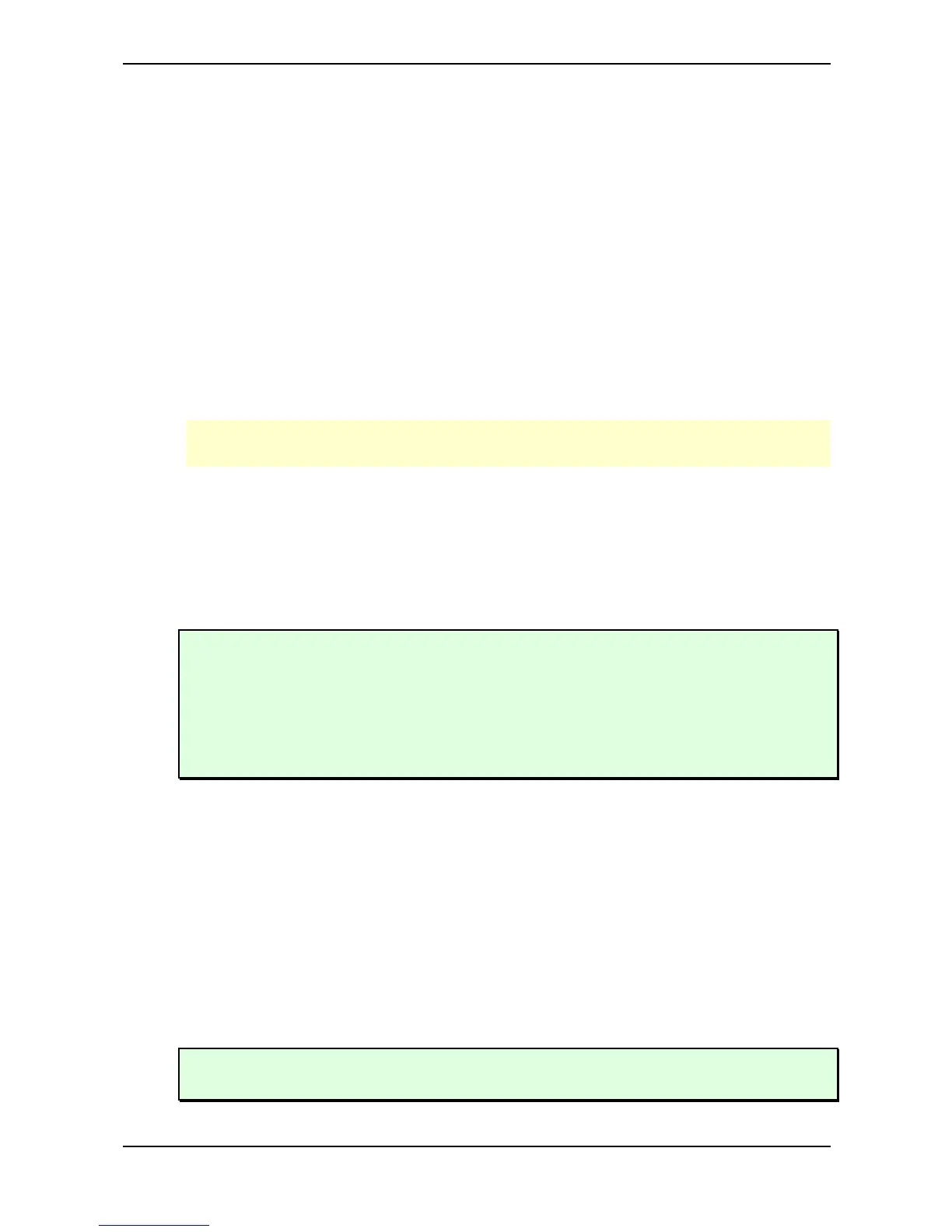Sound Parameters – Effects
111 Waldorf Q User’s Manual
5. Feed the Q´s audio input with your external signal and trigger one or more notes . You
should hear the vocoder effect. We recommend using speech or drum loops as external
audio material.
6. Try different settings of the vocoder parameter and tune to taste.
Bands 002…025
Sets the number of filter bands. A setting of 25 bands results in a very fine frequency resolution, so
that the original signal is almost completely restored by the synthesis filters. For a classic sounding
Vocoder effect, you should set the number of bands to values between 13 and 22 bands.
Analysis Signal External / Aux / Inst.1 FX...Inst.4 FX / Main in/Sub1 in /Sub2 in
Determines the source of the signal that is analyzed. This signal is also known as Speech signal. The
synthesis signal always comes from the current sound. This is not a real limitation because the voice
architecture isn't affected at all by the Vocoder. You still have all three oscillators and two filters.
You achieve the best results with external signals when you set Input Gain in the Global Edit
to 1 or 2 for line level signals.
A. Lo Frq and A. Hi Frq 10.9Hz…16.7kHz
Set the frequency of the lowest respectively the highest analysis band. You should set A. Lo Frq to
around 220Hz and A. Hi Frq to 14kHz for voice analysis (the default values) or to around 100Hz and
16kHz for drum loops or other signals with a lot of bass and treble.
All other analysis bands are spread equally between these two bands.
If you find that the Vocoder sounds too nervous, you might want to narrow the frequency range
of the analysis bands.
If you want to extract one instrument from a complex sum, you should set Bands to 2 and
change A. Lo Frq and A. Hi Frq until you find the signal’s main frequency range. So you can
i.e. process a full sounding String Pad to be emphasized on the Snare Drum or Hihat figure of a
drum loop.
S. Offset -64…+63
Sets the relative offset of the lowest synthesis band compared to the lowest analysis band. A setting of
0 means that the lowest synthesis band has the same frequency as the lowest analysis band. +63
means that the lowest synthesis band has the same frequency as the highest analysis band. Negative
values mean that the lowest synthesis band is even below the analysis band.
Hi Offset -64…+63
Sets the relative offset of the highest synthesis band compared to the highest analysis band. When you
set it to -64, it is tuned to the lowest analysis band.
All other synthesis bands are spread equally between these two bands.
When you set S. Offset (the low offset) to +63 and Hi Offset to -64, the synthesis frequency
bands are arranged vice versa compared to the analysis bands, so you get a flipped Vocoder.

